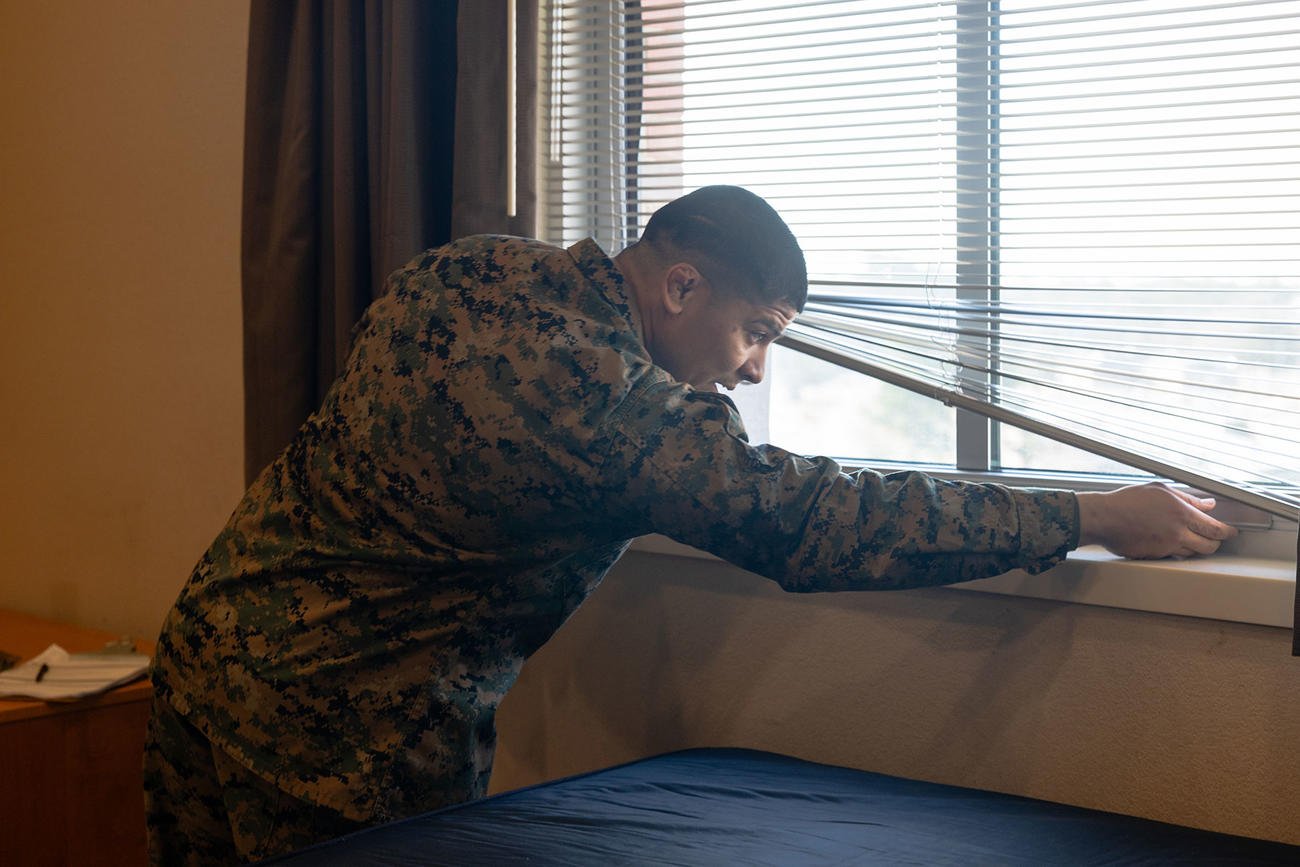

The Marine Corps launched a new maintenance tracking program Tuesday, hoping to make it easier for Marines to request fixes for problems they encounter in the barracks.
The system, called QSRMax, has existed in parts of the military, but now it is service-wide for the Corps. Across the force, Marines should see quick response codes — also known as QR codes — in their barracks.
The intent is for Marines to identify the problem, scan the code on their phones, and report the issue to maintenance facilities. The Marine Corps said that the requests will be seen at the strategic level, meaning that leaders echelons above the requesting Marine can collate and keep track of maintenance problems en masse.
The initiative is part of the Marine Corps’ Barracks 2030 plan, which is meant to improve housing for Marines who might have lived in squalid, vermin-infested and sometimes flooded rooms, according to a government watchdog report from last year and previous Military.com reporting.
“QSRMax is a major component of improving management within the Barracks 2030 plan,” Maj. John Parry, a spokesperson for the service’s installation command, told Military.com on Wednesday. “This new digital maintenance tracking system was designed to improve accountability and responsiveness for maintenance requests and allow Marines to track them in real time.”
Across the military, it can be a problem to keep track of maintenance requests, respond to them and then fix them. Some issues can remain stagnant without a fix for months, according to a Government Accountability Office report from 2023.
Earlier this year, Military.com reported on improvements the Corps was trying to make in light of concerning images that surfaced on social media showing poor living conditions for Marines. One initiative was a pilot program at Marine Corps Air Station Miramar, California, where the QSRMax concept was tested.
That Miramar pilot has proved to be a blueprint for how the Corps wants to improve barracks and maintenance, according to Parry. It tested “resident advisers” or staff noncommissioned officers assigned to the barracks for more oversight.
Currently, when Marines submit a maintenance request through the QSRMax system, it is received by barracks managers. Barracks managers are often junior troops — an additional duty, in most cases — and are given the daunting tasks of overseeing that fixes get done.
The Marine Corps is trying to rectify that.
“I don’t want to put a corporal or a sergeant who’s not a barracks manager in charge of that barracks,” Marine Corps Commandant Gen. Eric Smith told reporters in October. “That’s how you fix the public works — with a professional to a professional.”
In a memo obtained by Military.com last year, the Marine Corps said that it planned to replace the 532 noncommissioned officer barracks managers with 115 government personnel and 232 contractors. Those “professional barracks managers” will report to the installation commander, and the idea is to take the responsibility away from Marines who may not be qualified to manage a barracks and give it to someone whose full-time duty is to do so.
For now, the QSRMax program is in full effect and looks to increase “transparency and accountability” about barracks fixes for Marines.
“The introduction of QSRMax marks a new chapter in facilities maintenance within the Marine Corps, characterized by efficiency, transparency and responsiveness,” a Marine Corps message announcing the program said Tuesday.
